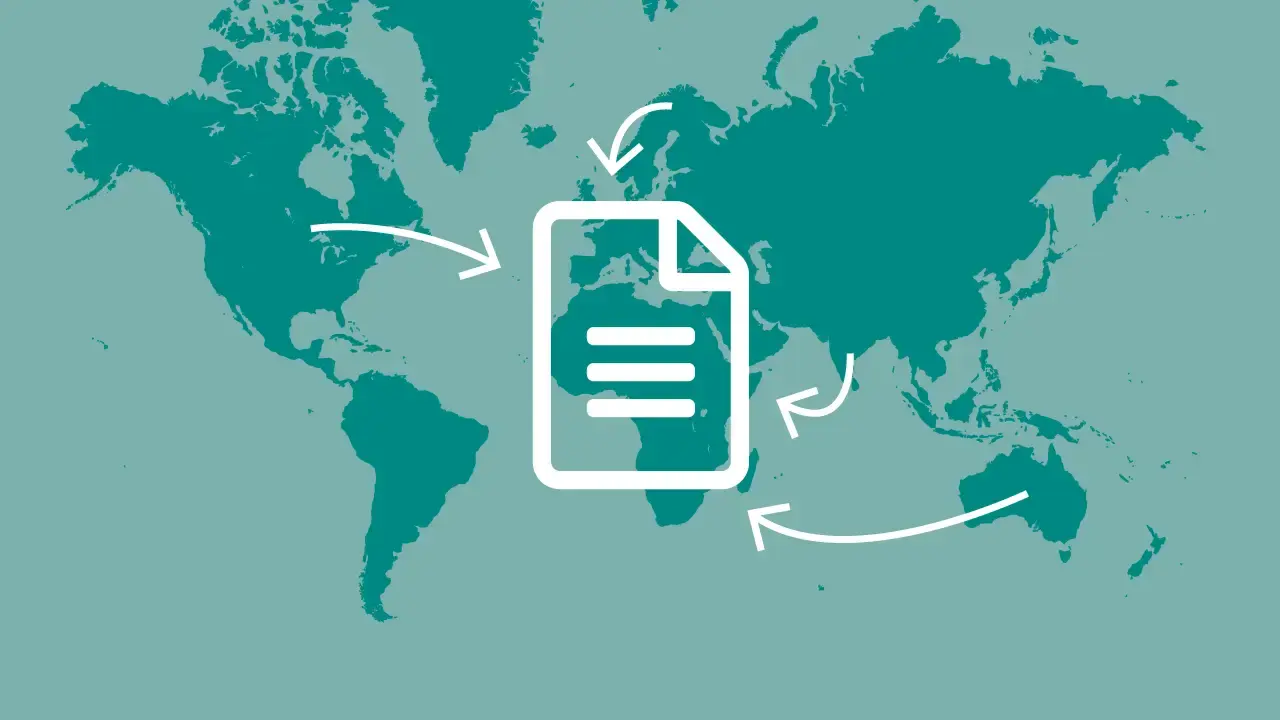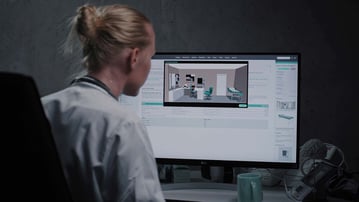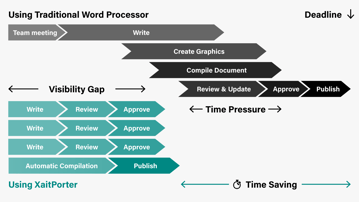By facilitating simultaneous work, teams naturally develop large, complex documents faster while boosting in-depth, high-quality content.
Learn why real time document collaboration is the new gold standard, and how to use it to reclaim significant time.
What is Real Time Document Collaboration?
In today’s fast-paced digital age, real time document collaboration is essential for streamlining processes and optimizing resources. Basically, it makes development easier and faster by putting every contributor and manager in the document together at the same time, regardless of location or time zone.
Consider these two common process scenarios:
Without Real Time Document Collaboration: Imagine a team of experts working on a complex proposal. One person writes the solution overview and passes it on to the next contributor to write the solution description. Some teams might even split up the document and email out sections. Either way, if you’re not working on the same document in-parallel, the process is sequential, requiring manual coordination.
With Real Time Document Collaboration: Imagine all of your contributors working in the same document, simultaneously, writing, reviewing, and editing real-time. Everyone on the team sees the content and edits without delay. This approach eliminates manual coordination, miscommunication and errors while significantly accelerating content development.
Benefits
The world has changed. The traditional office, where colleagues sat side-by-side, has evolved into a global, interconnected workspace. Teams are constantly working across barriers, including different departments and locations, and even time zones. This shift makes the traditional co-authoring via email and attachments obsolete, especially for teams trying to do more with less.
By working together at the same time, teams quickly realize significant benefits.
- Increase Efficiency: Everyone accesses the same centralized document at the same time, eliminating manual coordination and boosting productivity.
- Boost Productivity: Any number of contributors work seamlessly together, without having to worry about versions, saving or losing work.
- Enhance Quality: Contributors exchange expertise, perspective, and immediate feedback to build and refine more relevant content faster.
- Document Control: A single document with granular access permissions while audit trails track changes down to the keystroke.
- Inspire Teamwork: By fostering the seamless exchange of ideas and information everyone sees they can accomplish more together than on their own.
What Collaboration Looks Like Like
Imagine you and a colleague are working on the same document at the same time. While you’re in Texas writing the problem statement, your colleague is in Virginia writing the proposed solution. Imagine a centralized hub and a living document.
What does that process feel like? It feels like you’re:
- In this together as you draw on each other’s strengths.
- Avoiding overlaps because you can see content dependencies.
- Spotting gaps because everyone can see how content fits together.
- Getting answers faster and with greater quality and context than via email.
- Improving nonstop as real-time feedback fuels adjustments and improvements.
- Accomplishing tasks faster as you eliminate manual effort and delays.
Suggested Content


Why Co-authoring Software Is Essential for Complex Document Creation
December 12, 2024

Key Scenarios
Working together in-parallel has rapidly become an indispensable tool for enterprise organizations delivering large, complex documents, proposals, and reports. Especially when it comes to global offices and with the advent of remote working or hybrid work.
Here are just a few examples:
- Proposals: System architects and product engineers share usability expertise to write more accurate competitive proposals faster.
- Government Applications: Multiple engineers and project managers share modeling expertise real-time to build more accurate licensing round applications faster.
- Project Studies: Process engineers and civil engineers share design expertise real-time to write higher-quality FEED studies faster.
- Operational Reports: Scientists share expertise real-time to write more accurate geoscience analysis faster.
- Process Documentation: Managers update decision points on-the-fly so everyone is immediately working from the latest information.
- Technical Specifications: Multiple engineers and technical writers share product information real-time to maintain accurate datasheets faster.
- Contracts: Legal teams work simultaneously with a single source of truth for contract goods, services, and terms.
- Infrastructure: Multiple geologists and project managers share design experience real-time to write more precise offshore well plans.
Essential Software Features
This real-time approach enables seamless communication and effective decision-making to accelerate high-quality document development. However, to truly harness its power, you need the right tools.
When considering this approach for your enterprise, look for features that optimize its effectiveness:
- Co-authoring enables multiple users to work together in a single document at the same time, without overwriting.
- Granular security ensures that only authorized individuals can view or edit by controlling access and roles.
- Version control and auto save automatically track all changes down to the keystroke, while allowing users to compare versions and revert to a previous iteration.
- In-Document comments deliver responsive feedback and clarity that keeps teams focused on continuously improving and refining content.
- Automation eliminates manual coordination that stalls productivity, including parsing and compiling documents for review and repetitive reformatting.
- Parallel processes streamlines effort by writing multiple tasks at once to optimize resources and time.
Tips for Effective Real Time Document Collaboration
This parallel approach has revolutionized the way teams work together and create large, complex documents, proposals, and reports. By leveraging expertise and perspectives real time, you streamline the process, boost productivity, and improve quality.
To maximize the benefits, adopt these best practices::
Create Roles and Responsibilities
Define document ownership, section leads, writers, reviewers, and approvers. Define who will review what and what they will focus on, for example, strategy vs readability.
Assign Specific Sections
Clearly delineate the sections each writer is responsible for to avoid confusion and redundant effort. Identify where content might overlap up front to ensure consistency.
Establish Communication Protocols
Schedule regular check-ins to discuss progress, address concerns, and align on the overall direction. Clearly define when to raise your hand and ask if something is unclear.
Set Writing Standards
Create a style guide to ensure consistency in tone, voice, and style. Use layout templates to enforce formatting, even when contributors copy and paste.
Define What Feedback Looks Like
Ask for actionable feedback with specific data points and even examples. Have a clear process for resolving disagreements and coming to consensus on conflicting edits.
Real-time document collaboration has evolved from a niche tool to an essential component of the modern enterprise office. By understanding the process innovations and adopting best practices, you can maximize its potential.
Modern document management tools like XaitPorter empower real time document collaboration and facilitate parallel processes. Advanced features, including co-authoring, automation, and workflow, make it easier to harness enterprise expertise and accelerate document development.









